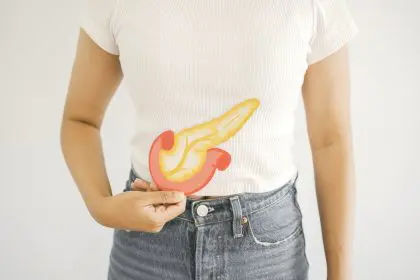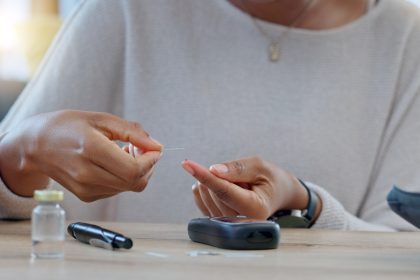For the millions of Americans managing diabetes, the simple act of choosing fruits requires careful consideration. While fruits are generally considered healthy, some varieties can cause significant blood sugar spikes, making them less suitable for those monitoring their glucose levels. Recent dietary guidelines emphasize the importance of understanding not just what to eat, but also how different fruits affect blood sugar levels throughout the day.
Blood sugar management and fruit consumption
The relationship between fruit consumption and blood sugar control remains complex. Natural sugars in fruits affect blood glucose differently, depending on factors like fiber content, ripeness, and portion size. Understanding these differences helps people with diabetes make informed dietary choices. The glycemic index, a measure of how quickly foods raise blood sugar, becomes particularly important when selecting fruits for a diabetes-friendly diet.
Modern dietary research indicates that timing of fruit consumption also plays a crucial role in blood sugar management. Eating fruit with meals, rather than as standalone snacks, can help minimize glucose spikes due to the presence of other nutrients that slow sugar absorption.
High-sugar fruits to monitor
Bananas: The ripeness factor
A medium banana contains approximately 27 grams of carbohydrates and 14 grams of sugar, making it a high-impact choice for blood sugar levels. The fruit’s glycemic index increases as it ripens, with overripe bananas having the highest sugar content. Green bananas offer a better alternative, containing more resistant starch that has less impact on blood glucose. The starch-to-sugar conversion process during ripening makes banana selection particularly important for diabetes management.
Studies show that consuming bananas with protein-rich foods or healthy fats can help moderate their blood sugar impact. Additionally, portion control becomes crucial – choosing smaller bananas or eating only half at a time can make this nutritious fruit more manageable for blood sugar levels.
Grapes and portion control
Despite their small size, grapes pack a significant sugar punch with 23 grams per cup. Their easy-to-eat nature often leads to overconsumption, and their moderate to high glycemic index can cause rapid blood sugar elevation. Berries, particularly blueberries and blackberries, provide a more diabetes-friendly alternative with higher fiber content and fewer sugars.
The antioxidant content in grapes, while beneficial, doesn’t offset their sugar impact for those with diabetes. Freezing grapes can help with portion control, as frozen grapes take longer to eat and may be more satisfying in smaller quantities.
Tropical fruits: Mangoes and pineapples
Mangoes contain approximately 45 grams of sugar per cup, making them one of the highest-sugar fruits available. Similarly, pineapples contain about 16 grams of sugar per cup and have a high glycemic index. Both fruits can cause quick blood sugar spikes due to their low fiber content and high natural sugar concentration.
For those who enjoy tropical fruits, pairing smaller portions with protein sources or consuming them as part of a balanced meal can help moderate their glycemic impact. Some diabetes educators recommend limiting tropical fruit consumption to morning hours when many people experience better blood sugar control.
Understanding glycemic impact
Watermelon: The water content paradox
Despite its refreshing nature and high water content, watermelon has a high glycemic index. One cup contains about 9 grams of sugar, and its mostly-water composition makes it easy to overconsume. Cantaloupe and honeydew melons offer better alternatives when eaten in moderation.
The high water content in watermelon can create a false sense of dietary safety. While hydration benefits exist, the fruit’s sugar concentration and high glycemic index make portion control essential. Eating watermelon with sources of fiber, such as chia seeds, can help moderate its blood sugar impact.
Dried fruits and concentration
The dehydration process concentrates sugars in dried fruits, making them particularly challenging for blood sugar management. A small handful of raisins or dates can contain over 20 grams of sugar, comparable to some candy. Fresh fruits provide better portion control and additional benefits from their water and fiber content.
Commercial dried fruits often contain added sugars or preservatives that can further impact blood glucose levels. When choosing dried fruits, look for unsweetened varieties and measure portions carefully using a food scale or measuring spoons.
Smart fruit choices and strategic consumption
To maintain stable blood sugar levels, consider these evidence-based strategies:
- Choose whole fruits over juices to benefit from natural fiber
- Monitor portion sizes, especially with high-sugar fruits
- Select fruits with lower glycemic indices, such as berries and apples
- Pay attention to ripeness, as riper fruits generally contain more sugar
- Pair fruits with protein or healthy fats to slow sugar absorption
- Time fruit consumption with meals rather than eating them alone
- Consider seasonal variations in fruit sugar content
- Track blood glucose responses to different fruits to understand personal tolerance
The orange juice consideration
While whole oranges can fit into a diabetes-friendly diet, orange juice presents different challenges. A cup of orange juice contains approximately 21 grams of sugar without the beneficial fiber of whole fruit, making it comparable to regular soda in sugar content. Eating whole oranges in controlled portions provides better blood sugar management through their fiber content and natural portion control.
The processing methods used in juice production can also affect sugar absorption rates. Even freshly squeezed juice lacks the fiber matrix present in whole fruits, leading to faster sugar absorption and higher glucose spikes.
Practical guidelines for long-term success
Managing diabetes doesn’t require completely eliminating fruit from your diet. Instead, focus on making informed choices about types and portions of fruit consumed. Regular consultation with healthcare providers or registered dietitians helps create personalized dietary plans that accommodate both health needs and food preferences.
The key to successful diabetes management lies in understanding how different fruits affect blood sugar levels and making appropriate adjustments to maintain stable glucose levels while still enjoying the nutritional benefits of fruit consumption. Regular blood sugar monitoring, especially when trying new fruits or combinations, helps develop a personalized understanding of fruit tolerance and optimal portion sizes.
This story was created using AI technology.
















